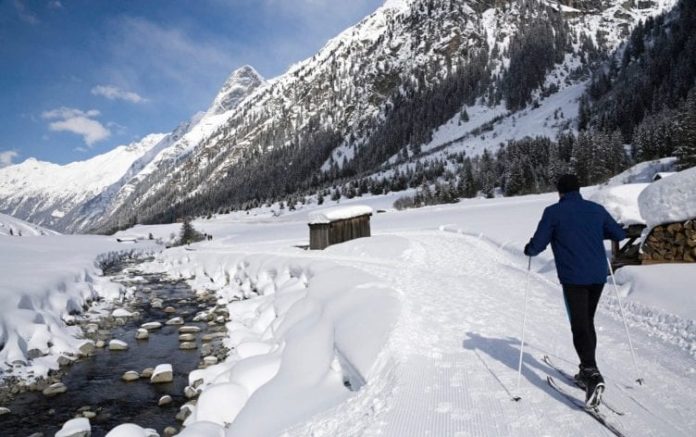
In winter, it can be hard to stick with a regular walking routine since it gets dark out earlier and icy sidewalks pose a challenge. However, there are plenty of fun, safe activities you can do that have similar health benefits to walking. Get ready to lace up your boots and try some new gear to take advantage of these five excellent exercises:
SNOWSHOEING
One of the easiest winter-walking alternatives to learn, snowshoeing is similar to walking or hiking. You only need snowshoes, snow and a good trail to walk on. The activity is low-impact and you’ll use mostly the same muscles you do when walking.
In terms of technique, avoid pointing your toes outward and instead widen your stance slightly to avoid stepping on the frames as you walk. Trekking poles are optional, but a good idea for additional balance and stability.
CROSS-COUNTRY SKIING
Cross-country skiing is a great way to get in a challenging cardio workout while spending time in nature. You’ll need to learn how to herringbone, snowplow and make step turns but if you’ve never done it before, don’t be intimidated. Just practice on a small hill with a gentle gradient until you feel comfortable enough to tackle bigger climbs and longer descents. Signing up for lessons is another option if you find yourself lacking confidence.
As for gear, the basics include cross-country skis with bindings, boots, poles and goggles. While costs can be high initially, it’s worth the investment especially if you live in an area where it snows. Cross-country skiing is a fun, total-body exercise that can pay huge dividends to your fitness.
ICE SKATING
Ice skating is a great way to strengthen your legs and core during the winter. It can also be a good way to socialize with friends and families and get new workout partners to join you for a fun activity.
Keep in mind there are different types of skates depending on what activity you try such as hockey, figure skating or speed skating. If you only plan to go to a skating rink occasionally, then rent skates. For anyone thinking of making it a permanent winter hobby, buying your own pair that fits you correctly is a good idea.
NORDIC WALKING
Nordic walking can be done any time of year, but winter provides an extra-challenging full-body workout thanks to the additional stability required for tougher terrain. The poles you use will be similar to cross-country ski poles, but most will have a variety of tips that can be swapped out for use in the snow, trail, multi-use paths.
A good pair Nordic walking poles can usually be purchased for around $100. These poles are different from traditional trekking poles and feature straps on the handle that allow you to release the pole on the backswing. The technique takes a little bit of time to get used to, but the extra calories you’ll burn when compared to regular walking, and the strength gains you’ll receive, are worth the extra effort it takes to learn.
TOBOGGANING
Sledding might not sound like a workout until you remember you have to walk uphill for the fun to begin. While walking up hills in the snow should help you build plenty of lower-body strength, if you’re looking for even more resistance, pull the sled back up the hill with a kid or two still in it. You won’t have to do this too many times before you begin to feel the burn.















